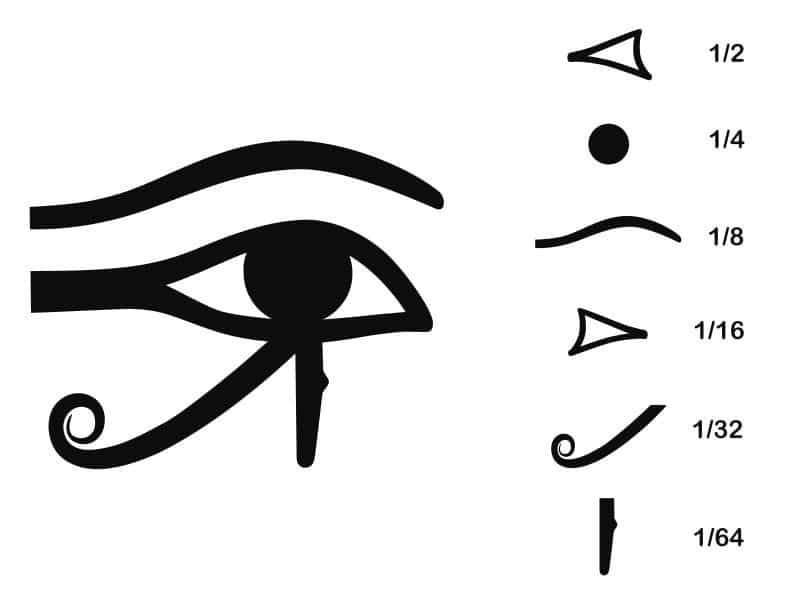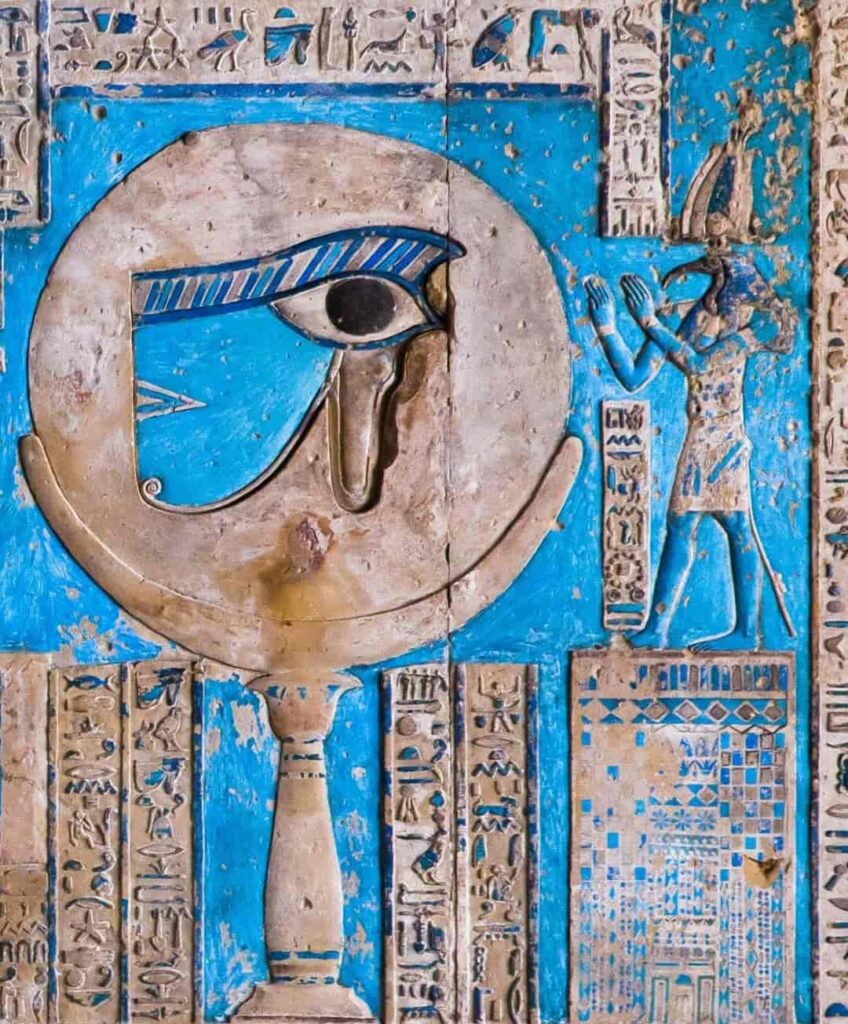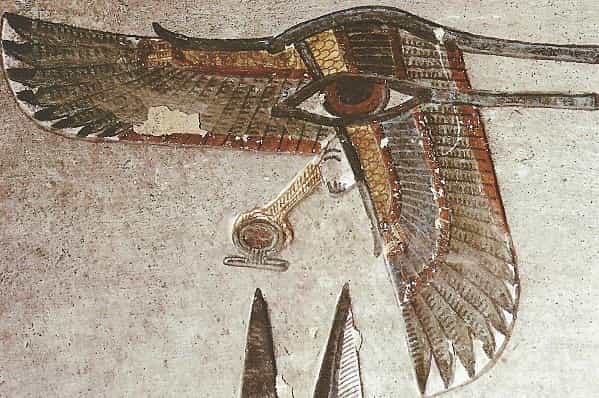The Eye of Horus, also known as the wedjat (meaning “the one who is complete”), is a powerful symbol from ancient Egyptian mythology, traditionally associated with health, protection, and restoration.
Rediscovered in modern times by various esoteric traditions, this ancient emblem has been reinterpreted in new contexts, though its origins remain deeply rooted in Egyptian myth.
Origin of the Eye of Horus
The myth behind the Eye of Horus originates in the legendary conflict between Horus, the son of Osiris, and Seth, the god of chaos and the desert. In their battle, Horus emerged victorious but suffered the loss of his left eye.
According to myth, the god of wisdom, Thoth (or Hathor, in some versions), crafted a magical eye, the Wedjat or Udjat, to restore Horus’s sight. With the power of this enchanted eye, Horus was able to breathe life back into Osiris, symbolizing healing and renewal.
The Eye of Horus became a powerful symbol of restoration, healing, and protection against evil. It appears frequently in ancient Egyptian religious texts, including the Pyramid Texts, sarcophagi inscriptions, and the Book of the Dead, where it serves as a protective emblem, particularly in Chapter 112: “The Eye of Horus is your protection, Osiris, Lord of the Westerners. / It safeguards you: it drives away all your enemies, / All your enemies are kept away from you.”
Mathematical Significance of the Eye of Horus
Beyond its religious symbolism, the Eye of Horus also played a role in ancient Egyptian mathematics. Its hieroglyphic form includes symbols representing fractions, particularly in agricultural measurements of surface area and volume.
Each part of the eye represents a fraction of ½, ¼, ⅛, 1/16, 1/32, and 1/64. This fractional system reflects a mythological explanation in which Thoth, during his quest to restore Horus’s eye, gathered 64 fragments of the eye from all over Egypt.
This parallels the myth of Osiris, whose body, dismembered by Seth, was later reassembled and mummified by Isis and Nephthys, enabling him to reign over the dead in the underworld.
Thus, the Eye of Horus is not only a symbol of restoration and healing but also a reflection of the ancient Egyptians’ sophisticated understanding of mathematics, mythology, and the natural world.
Who Was Horus in Egyptian Mythology?
In ancient Egyptian mythology, Horus (known as Hor in Egyptian, meaning “the lofty” or “the distant one”) was a celestial god who embodied kingship, war, and hunting. Seen as a symbol of civilization and order, he was often depicted as a human figure with the head of a falcon, crowned with the double crown of Egypt, representing his rule over Upper and Lower Egypt.
Horus was the son of Isis and Osiris, two of the most prominent deities in the Egyptian pantheon. Pharaohs were considered his descendants and earthly representations, embodying his divine authority.
In myth, Horus personified the fertility of the Nile Valley and the structured order of the Egyptian state, which was constantly under threat from the barren desert and the foreign lands ruled by Seth.
The Eye of Horus as a Protective Amulet
The Eye of Horus was a vital symbol in Egyptian religion, believed to possess healing powers and to ward off evil and malevolent forces. It was frequently engraved on amulets, inscribed on tomb walls, and placed on artifacts to protect children, the ill, and the deceased.
Some accounts distinguish between Horus’s two eyes: the right eye, associated with the sun and the solar god Ra, and the left eye, connected to the moon and the night. Together, the eyes symbolized restoration, completeness, and the return to wholeness in life and death.







